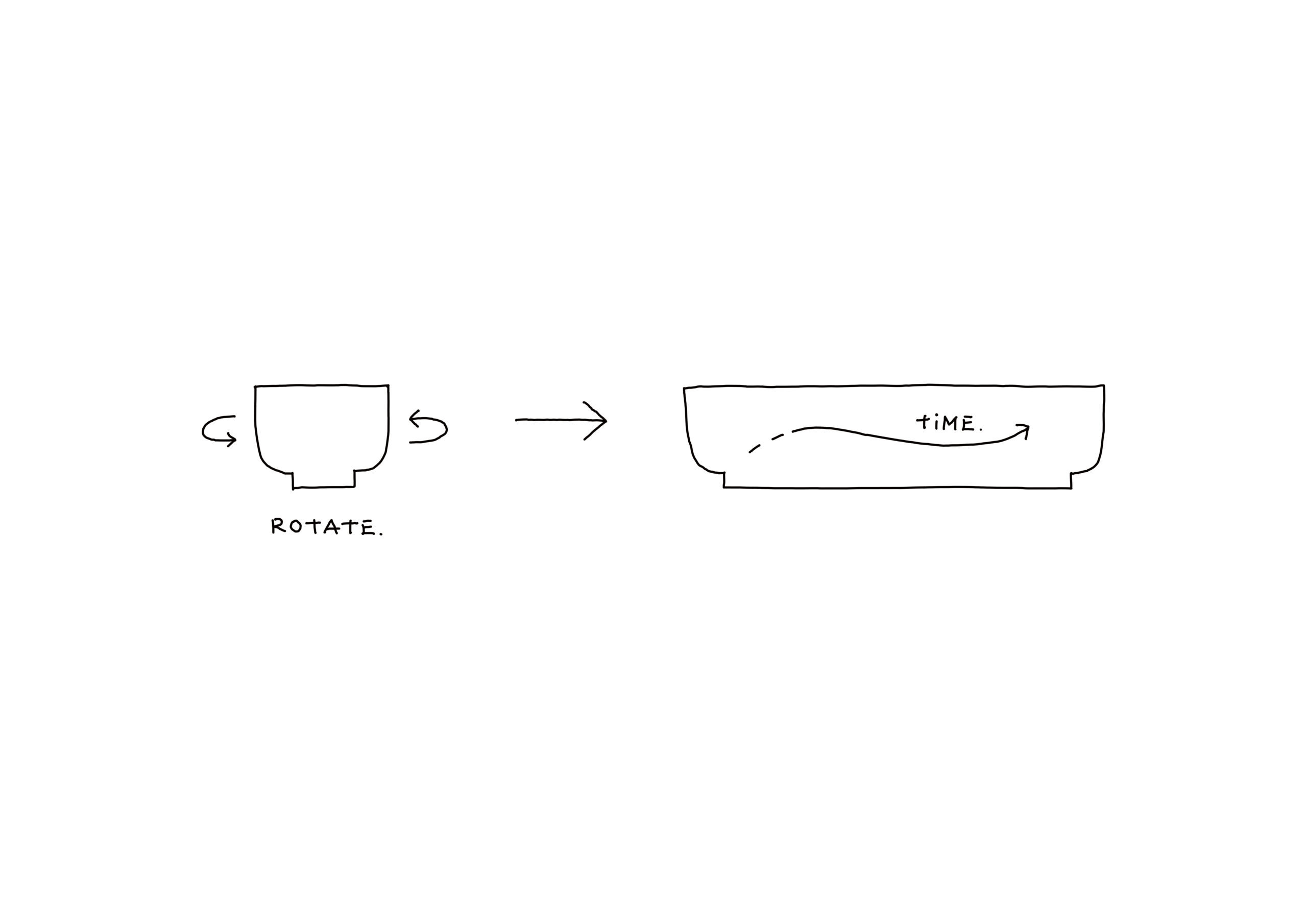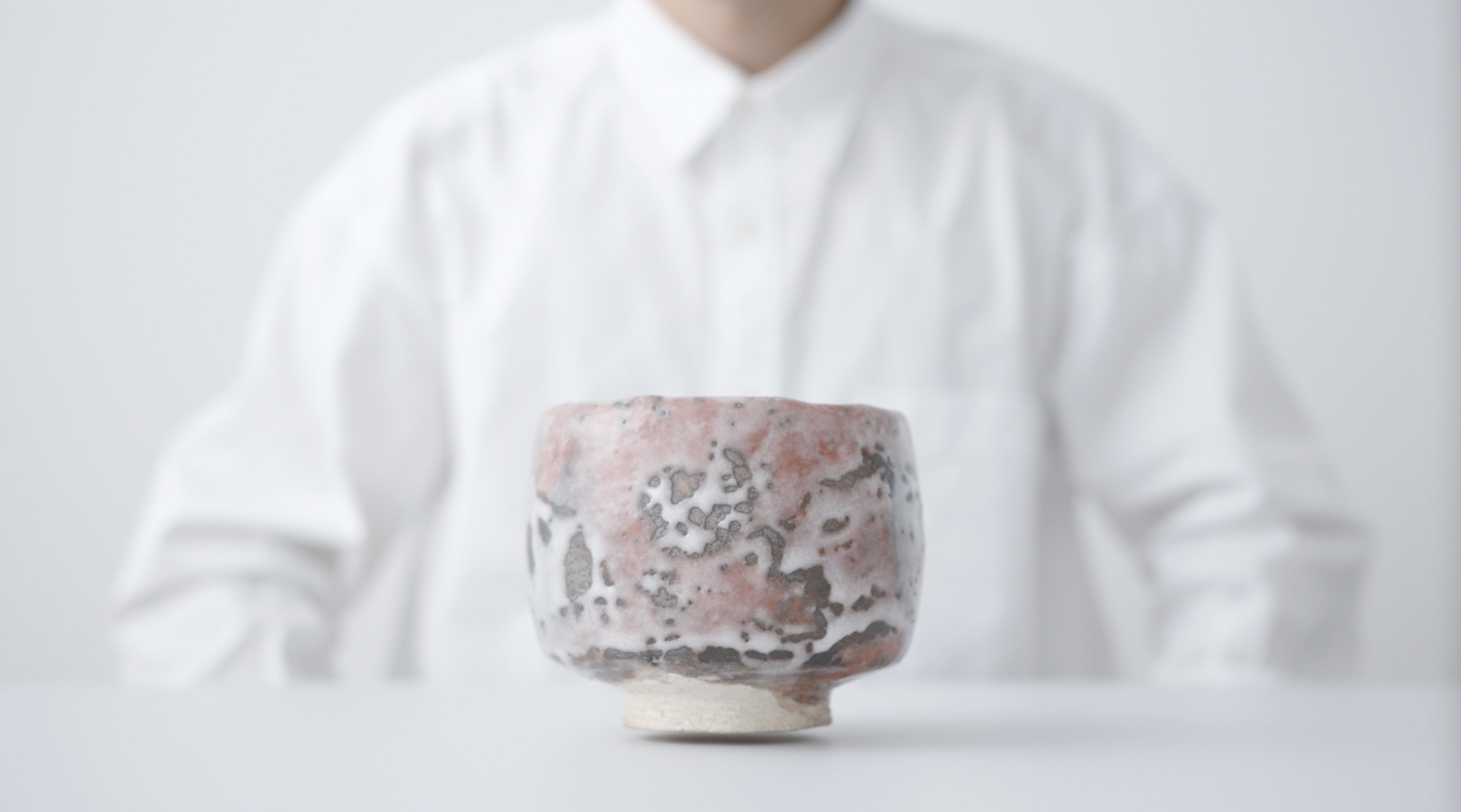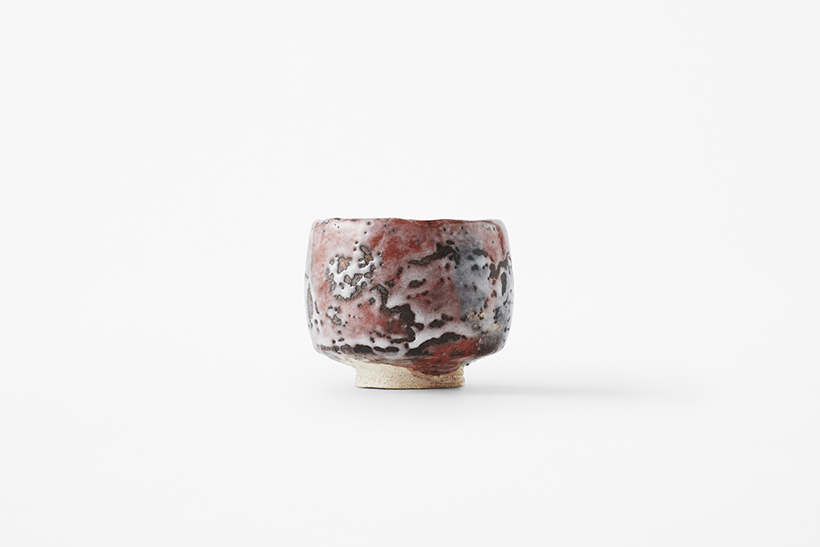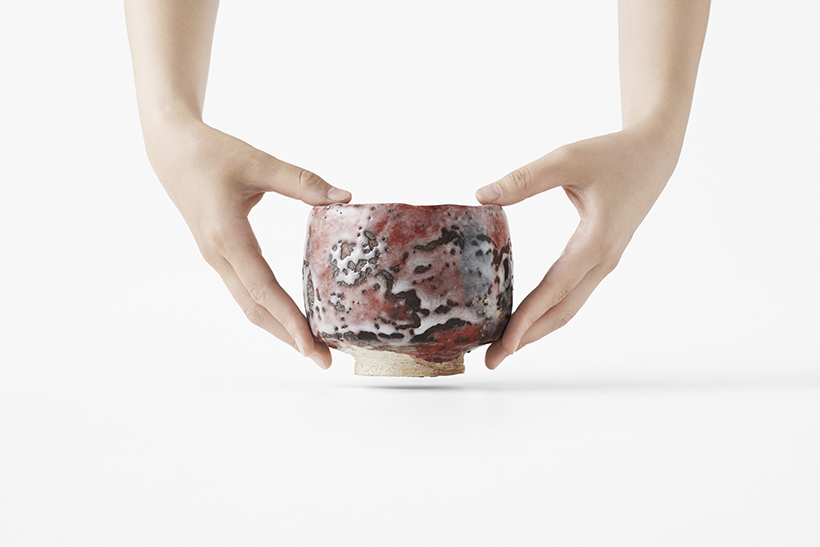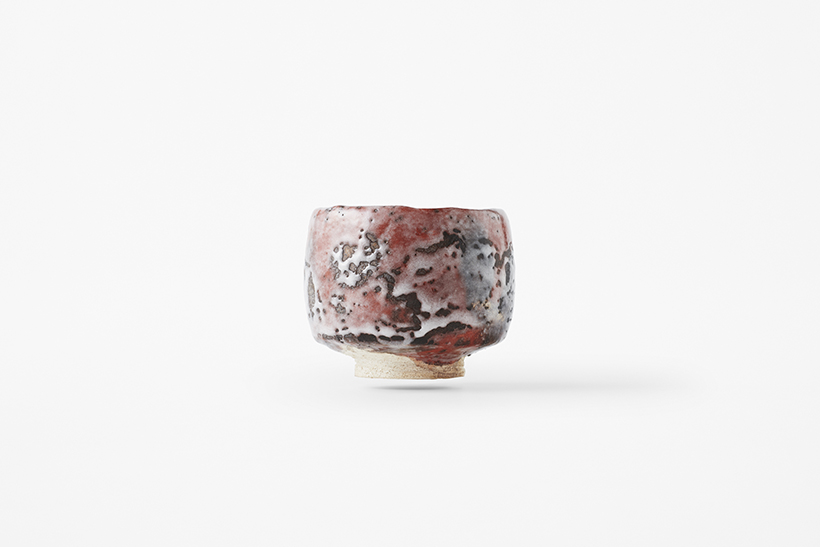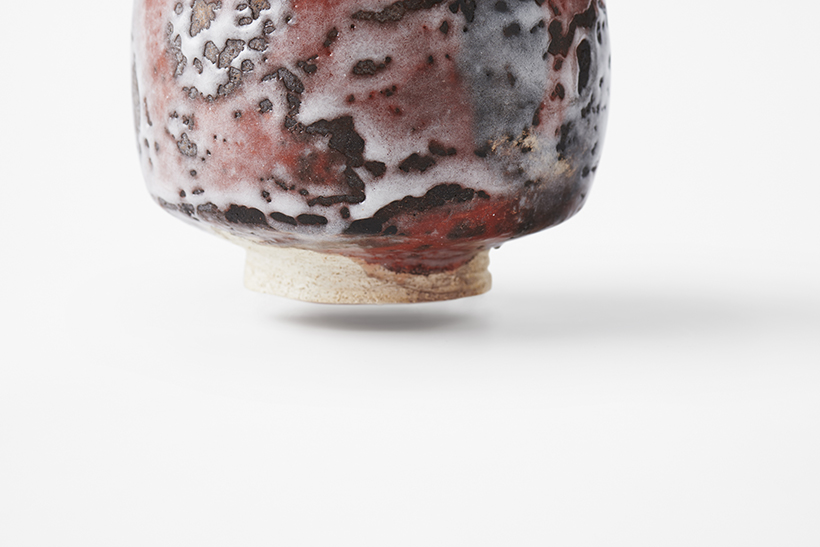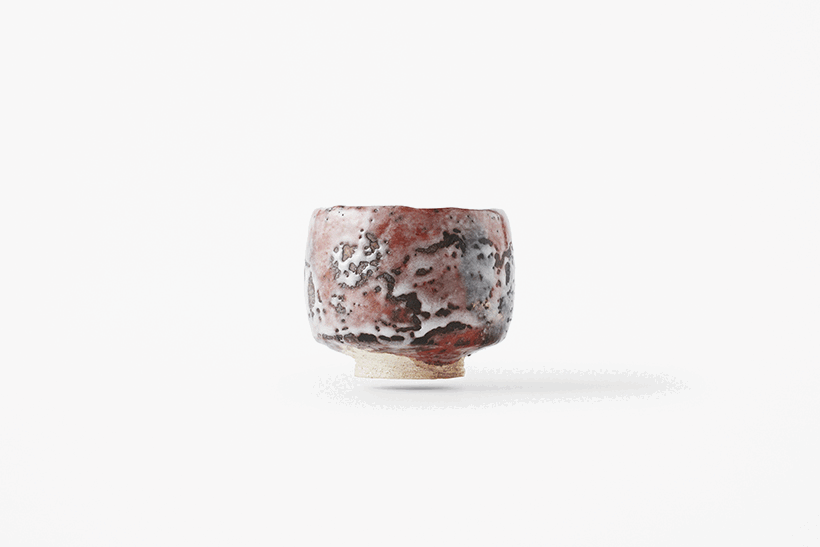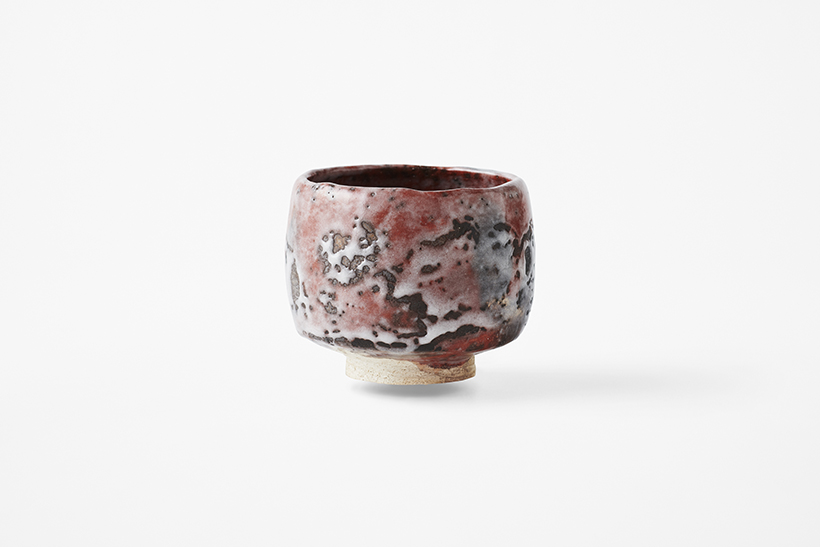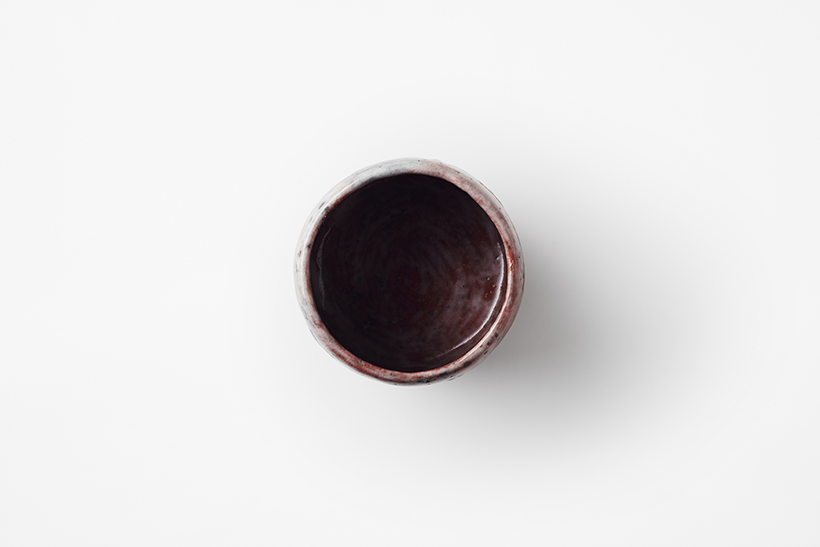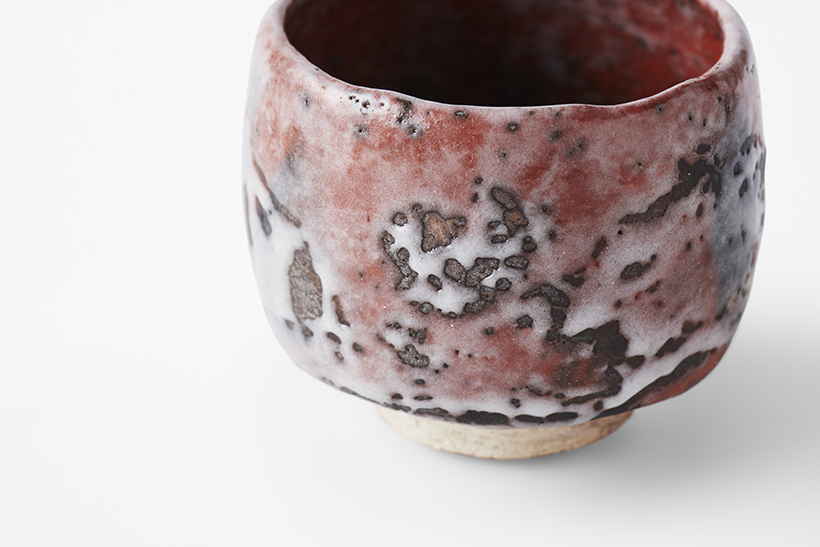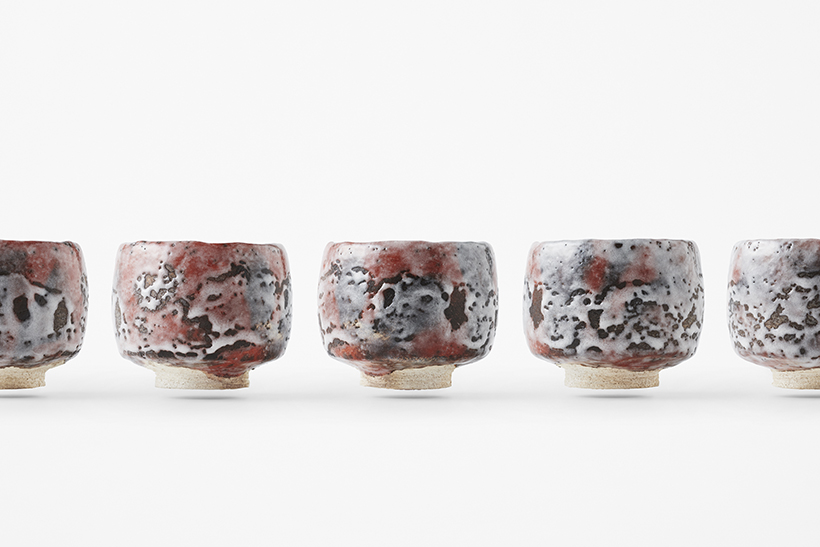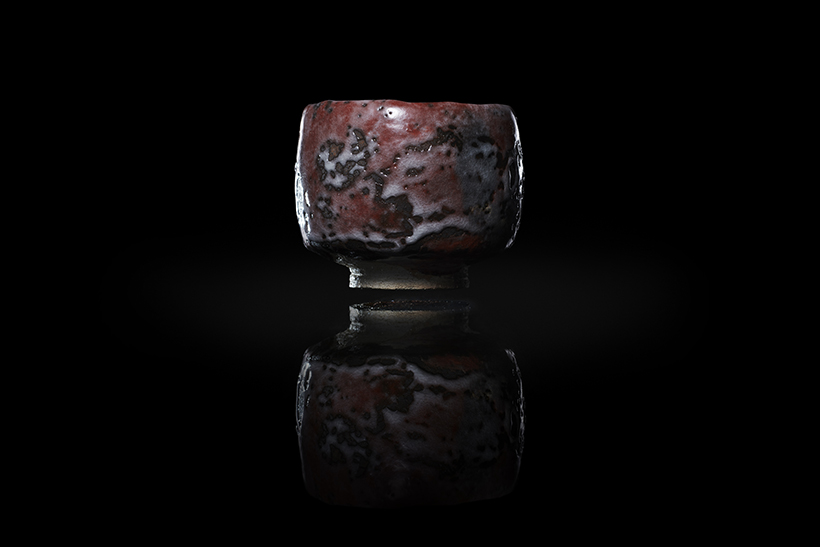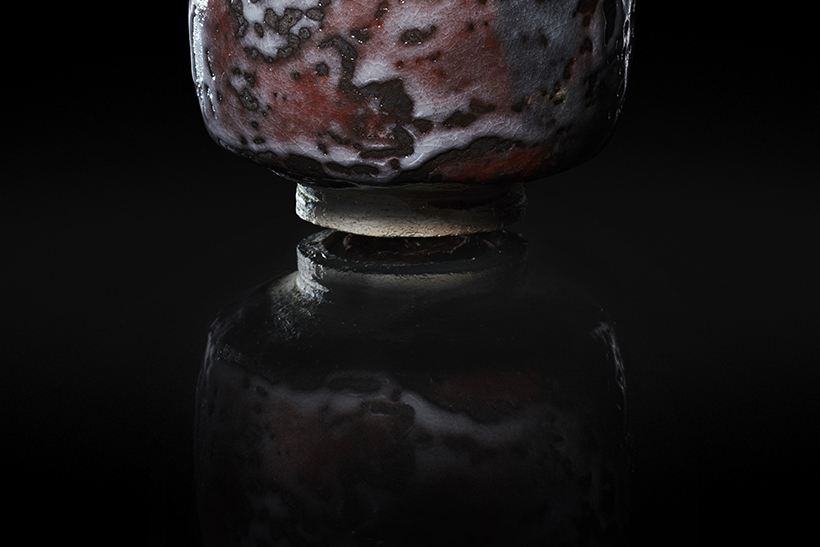chuwan
Raku ware is characterized by the raw expression of its earthen material, achieved by hand-molding instead of wheel throwing. Thus, the form of a Raku tea bowl is uneven, distinct from the radial symmetry of a thrown bowl. In searching for an exhibition method that showcases this characteristic, the idea to float and rotate the object was conceived.
Multiple electromagnets and permanent magnets were combined in a way to achieve a balance between their “repulsive” and “attractive” forces, resulting in a floating mechanism similar to a linear motor car.
By having the tea bowl built with a thick base, a magnet could be embedded in the bowl so that it floats 7mm from the pedestal containing levitation mechanics. Additionally, a soft wind is blown from the stand toward the bowl, making it rotate slowly.
When visitors enter the exhibit space, they first see the bowls backlit, and appearing in changing silhouettes. Moving into the space and viewing the bowls from the side, the light then allows the close observation of the glaze, crazing, and unevenness of the surface. The exhibition method embodies the flow of time inherent to the “traceries of the hand” present in each Raku bowl.
The project is titled chuwan after the words chawan–Japanese for “tea bowl”—and chu, which means midair.
